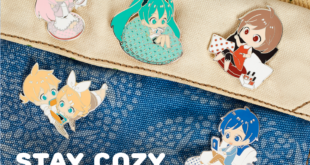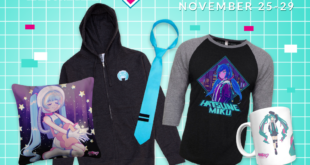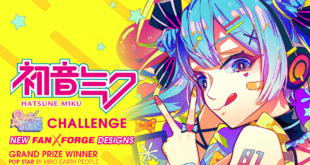Avoiding Bootleg Figures Online
When you’re buying the item at a convention or a store, you can look at the box and inspect every little bit of it to make sure things check out. With modern technology, you can even search up details on the figure in question right on the spot. But when you’re buying online, things get quite a bit trickier. You don’t get to see the product in person until it gets to your door and, at that point, it could be too late. So how does one avoid bootlegs online?

When possible, buy from trusted sources.
eBay and Amazon should be the last place you venture to for figures unless you’re either looking for a used item or a really old figure. This is due to those websites being made of far too many vendors to count and it taking much longer to find a legit seller.
Official Online Shop Assuming the item is still up for pre-order, the obvious bet is to go to the official online shop selling the item.
GSC Partner Shops Good Smile Company has a list of partner shops available on their website. These shops span all over the world and are guaranteed to sell legit GSC merchandise. You can trust them to not sell bootlegs at all as GSC will not partner with shops that sell bootlegs of any kind.
In addition, these shops also tend to sell out of less popular figures rather slowly. As of the time of this article, many of these stores still had various older Nendoroids and even scaled figures dating back to 2011 releases.
Other Trusted Sources If you missed the Good Smile Online Shop pre-order but the item hasn’t been released yet, AmiAmi is a great place to check. And, if you’re lucky, you may find a previously released figure that hasn’t sold out yet. They do sell pre-owned figures, though, so check before you buy! (The pre-owned items are clearly marked as such.)
Mandarake is a great place to go if you’re looking for used or prize figures. The only issues are that you can’t combine orders, so the shipping can get very pricey, and their stock changes all the time, so there’s no guarantee of you getting the figure you’re looking for.
Using Ebay
Sometimes, eBay is just easier. The figure could be old or you’re looking to buy it used because it’s just cheaper that way. You still need to be careful, though, as eBay is filled with a plethora of bootlegs that will easily bury the real figures.
When the item has a billion names in the title. A trustworthy seller doesn’t put every possible keyword in the title of the listing. A good listing will have the name of the figure and possibly the name of the company that created it. No words like “cute” or, in the case of VOCALOID figures, “anime,” should appear. (Although calling VOCALOID “anime” for the sake of having the figures show up in other searches seems to have become popular even in Japan.)

Check the seller rating. This is a hit or miss but can help you a little bit. Overall, it seems that most people who buy bootlegs nowadays know what they’re getting. But if you peek at the Neutral and Negative feedback and see even a few people complaining of issues like poor paint jobs, figures coming without a box, and items that either broke the moment they were touched or came broken, you’re likely looking at a bootleg seller.

Check what the seller sells. Are they selling everything from car parts to figures? You probably shouldn’t buy from them. Your best bet is to look for someone that focuses on figures and similar merchandise. Always keep in mind all of our tips though. Finding someone who just sells figures could mean you found someone who just sells bootleg figures.
Always look for “China Version” in the description. Even if the name of the item has “Good Smile Company,” “Bandai,” or any other company name in it, ALWAYS CHECK THE DESCRIPTION. The newest trick bootleggers use to rip people off and make sure that they keep their money is by adding “China Version” or something of that nature to the item description. This way, when people file a claim, the bootleg seller can say “I told them it was the China Version and not the official one.” If it says “China Version,” don’t buy it. This also includes “Official China Version” and any other variant.
Also look for “Authentic Version.” “Authentic Japanese Version,” “Authentic Japanese Product,” or anything else of that nature works as well. Very rarely will a seller say their item is authentic and then sell a bootleg. That’s one thing that will definitely get them in trouble. (Following the “China Version” warning, though, don’t buy an “Authentic Chinese Version.”)
Look at the pictures provided. If they’re using stock photos from the company website, ask to see pictures of the product itself if you’re not convinced. And even if they’re providing pictures of the item, don’t fully trust the seller until you do a quick image search. You’ll see bootleggers often use the same picture everywhere and sometimes it’s even stolen. Some legit sellers will use stock photos for one reason or another, but they’re usually happy to provide pictures of their item, especially if you’re interested in it.
Remember the other rules. If a Halloween Miku figure is going for $16.00 USD, there’s a problem. If a Snow Miku figure is up for purchase before the Winter Wonfes release, you’re probably looking at a bootleg. And if the picture(s) provided look(s) like a bootleg, it’s a bootleg.
When in doubt, MFC may help. My Figure Collection has a list of bootleg sellers as well as a list of sellers who members trust. These lists are, of course, not complete and never will be. But they’re a great resource to go to.
This is not a checklist. While these are all signs of a bootleg, I’m not going to say these are all of the signs. Don’t use this as a checklist to make sure everything is perfect. You need to use your best judgement when purchasing figures online. This list is simply some of the giant red flags you should look for.
 VNN Everything about virtual voices, just one click away!
VNN Everything about virtual voices, just one click away!



